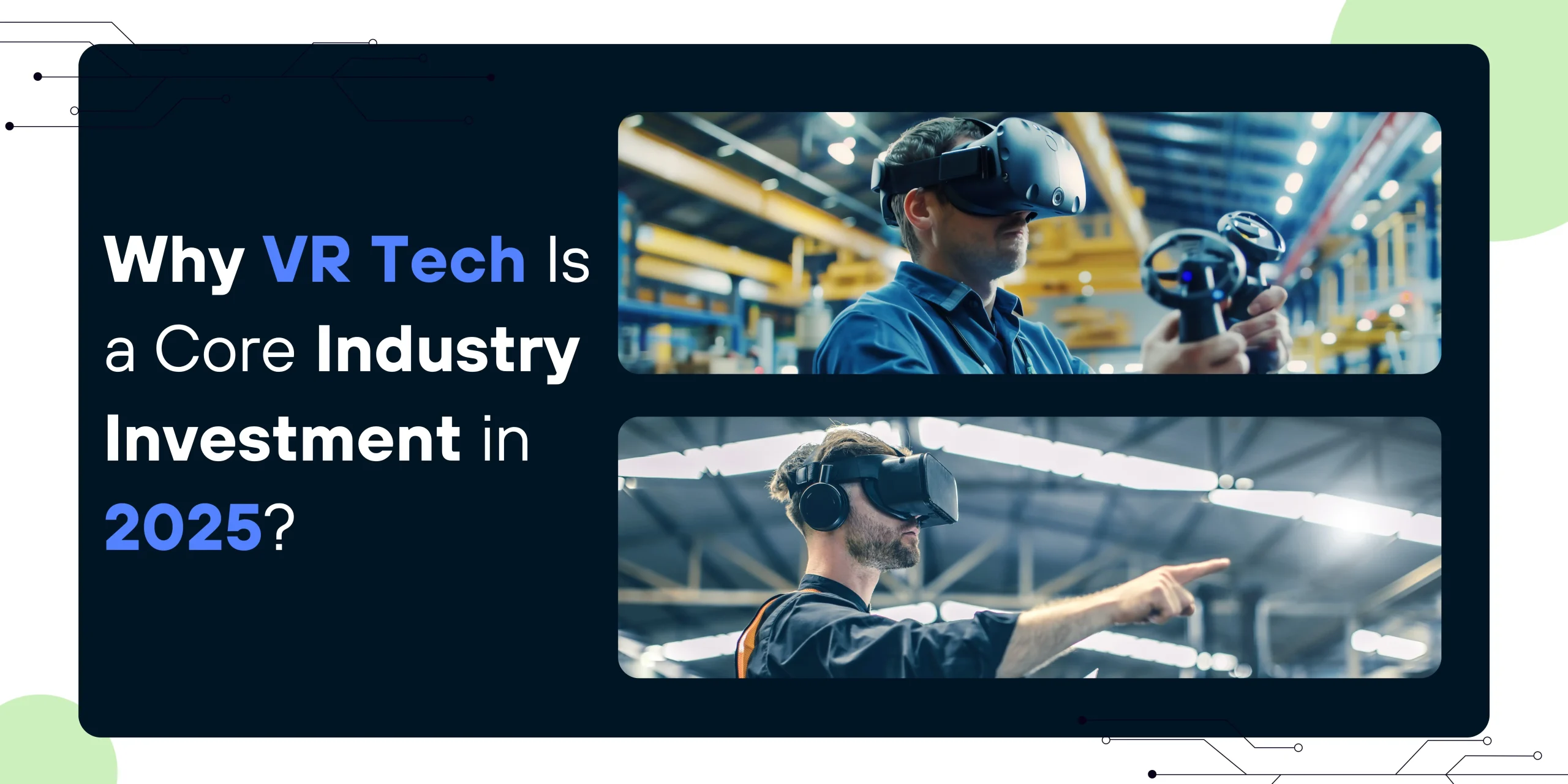October 1st, 2025
Category: virtual reality,VR training
No Comments
Posted by: Team TA

Today, virtual reality (VR) has shifted from niche technology to a mainstream driver of business transformation. VR is being utilized by industries such as healthcare, education, retail, and entertainment to train staff, develop new products, and provide more engaging customer experiences. This is due to advancements in 5G, the affordability of headsets, and immersive platforms. The momentum is backed by strong market growth. According to Fortune Business Insights, the global VR market, valued at USD 16.32 billion in 2024, is projected to reach USD 20.83 billion in 2025 and surge to USD 123.06 billion by 2032, with a CAGR of 28.9%. This makes VR a core investment priority for forward-looking companies.
How Popular Is VR in 2025?
From a niche technology, virtual reality (VR) has become a widely used tool in many different industries. VR experiences are now more widely available than ever because of low-cost headsets, intuitive platforms, and quicker connectivity. With 70% of VR users regularly playing, gaming still accounts for a large portion of its appeal. About half of universities now offer VR courses, and around 69% of healthcare executives plan to invest in VR for staff training and treatment, demonstrating how VR is revolutionizing industries like education, healthcare, and workplace training. Patients can benefit from cutting-edge treatments, professionals can obtain practical experience in secure virtual settings, and students can learn through immersive classrooms.

VR is also being utilized by businesses; more than 75% of Fortune 500 companies use it for customer engagement, training, and design. With roughly 1.3 million jobs, 67,000 patents, 10,800 funding rounds totaling an average of USD 15.1 million, and a projected CAGR of close to 19.1% toward USD 30 billion by 2029, the industry exhibits strong finance and innovation. Global hubs in the US, India, UK, Germany, and Canada support startups and investor activity while fostering talent and innovation. Based on these developments, VR is becoming a useful tool and a desirable area for the long term.
The Key VR Trends in 2025
1. Advanced VR Hardware and Wider Access
With better displays, inside-out tracking, and longer battery life, headsets have gotten lighter, sharper, and easier to use. Users can run rich VR on simpler devices for longer sessions thanks to wireless models and cloud streaming, which eliminate heavy cables and expensive local rigs. VR is now affordable for students, creators, and small businesses thanks to new wearables like smart glasses. The adoption of VR for training and learning, collaboration, and real work is facilitated by improved comfort and clearer visuals in sectors like education, healthcare, and design. Advances in hardware are paving the way for more widespread, useful applications.
2. Tactile & Multi-Sensory VR
Gloves, vests, and suits are employed in haptic and multisensory virtual reality to add motion, touch, and pressure to virtual environments. Inexpensive, lightweight devices provide clear tactile cues and full-body feedback, enhancing gaming, therapy, and training. Virtual scenarios are useful tools for professional training, healthcare, and education because of these sensations, which also enhance learning, increase realism, decrease simulation errors, and increase user engagement.
3. AI-Powered Personalization in VR
AI enhances and personalizes VR experiences. With real-time feedback, pacing, and difficulty adjustments, machine learning customizes content to each user. Lifelike avatars enhance social interactions, therapy, and training by responding naturally using speech and language models. AI also accelerates worldbuilding and content production. While cloud AI manages complex processing, generative tools enable creators to produce 3D scenes and assets more quickly. When taken as a whole, these developments make VR more entertaining, simpler to develop for, and now ready for broader daily use.

4. Enterprise VR for Operations and Training
Businesses use VR to train staff, test designs, and improve safety in 2025. While engineers use 3D product prototypes to identify problems early, workers can practice dangerous tasks in a safe environment thanks to virtual simulations. Teams in charge of logistics and retail conduct virtual walkthroughs to expedite processes and provide prompt training to seasonal workers. VR is also used by businesses for remote collaboration, customer demonstrations, and maintenance instructions. Large teams can access information more easily thanks to cloud streaming and lighter headsets. These tools improve productivity, reduce expenses, speed up decision-making, and make real work more hands-on and visual in a variety of industries.
5. Social & Immersive VR Entertainment
Users are immersed in vibrant, dynamic worlds where haptics, eye tracking, and artificial intelligence enhance presence in next-generation virtual reality games and interactive movies. For immersive moments, they incorporate layered sound, realistic physics, and narrative. Friends can get together, go to events, and work together in shared social spaces. In 2025, new creator tools make it easier to create immersive content, while cloud streaming and lighter headsets make joining easier and help VR develop into a place to play, learn, and connect.
6. Mixed Reality & Spatial Computing
Digital objects are brought into real-world environments through mixed reality, and interactions are made responsive and natural using sensors and AI in spatial computing. When combined, they enable users to interact with content in their immediate surroundings while designing, learning, or working together. In 2025, these tools are moving from labs into classrooms, offices, and homes. Lighter devices are now accessible through cloud-powered platforms, increasing the viability and accessibility of immersive, hands-on experiences.
Final Thoughts: VR as a Strategic Investment

VR has evolved from a novelty to a core technology, combining cloud streaming, AI, and spatial computing to produce useful, immersive tools for design, training, and teamwork. Richer content and more user-friendly interfaces are advantageous to both businesses and users. This change lowers expenses, increases access, and speeds up innovation. Since resolving performance and distribution issues unlocks long-term value across industries globally and sustainably, investors should concentrate on scalable platforms and low-latency delivery.